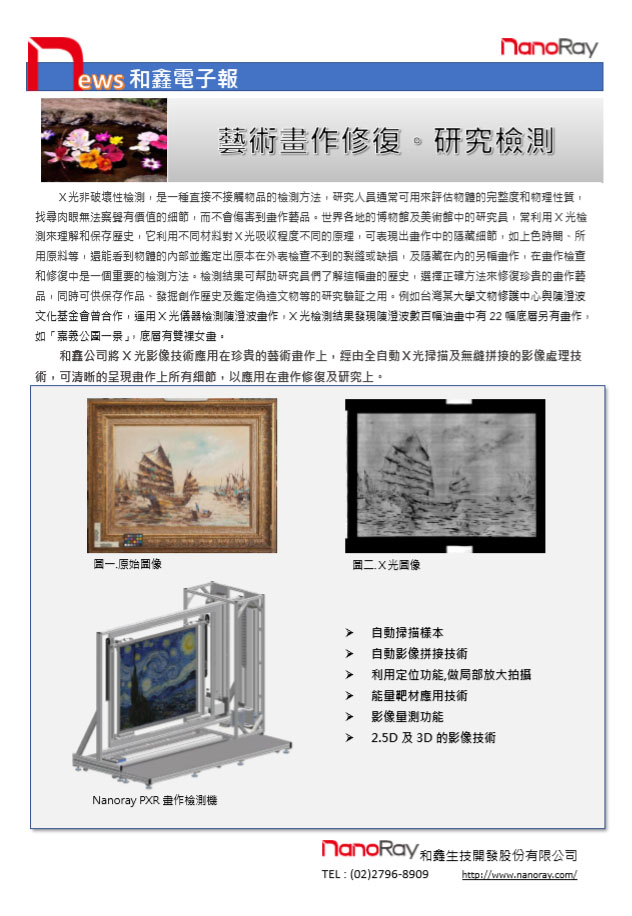X-ray non-destructive detection is a detection method that does not directly touch the object. Researchers can usually use it to evaluate the integrity and physical properties of the object and find valuable details that the naked eye cannot detect without harming the paintings and artworks. Researchers in museums and art galleries around the world often use X-ray detection to understand and preserve history. It uses the principle that different materials absorb X-rays to different degrees, which can show hidden details in paintings, such as coloring time, raw materials used, etc. , You can also see the inside of the object and identify cracks or defects that could not be inspected on the outside, and another painting hidden inside. It is an important detection method in painting inspection and restoration. The detection results can help researchers understand the history of the painting and choose the correct method to restore the precious paintings. At the same time, it can be used for research and verification such as preserving the work, discovering the creation history, and identifying forged cultural relics. For example, a cultural relics maintenance center of a university in Taiwan has cooperated with the Chen Cheng-po Cultural Foundation to use X-ray equipment to detect Chen Cheng-po’s paintings. The X-ray inspection results found that among the hundreds of oil paintings by Chen Cheng-po, 22 of the bottom layers have other paintings, such as “A Scene at Chiayi Park” , there are paintings of double nude girls on the ground floor.
NanoRay applies X-ray imaging technology to precious art paintings. Through automatic X-ray scanning and seamless stitching image processing technology, all the details of the paintings can be clearly presented for application in painting restoration and research.


